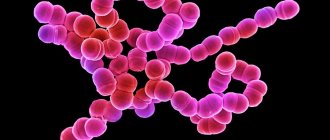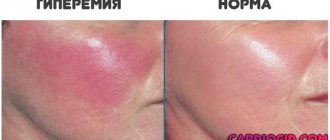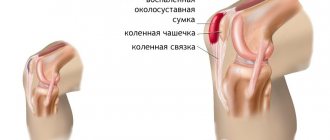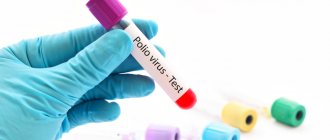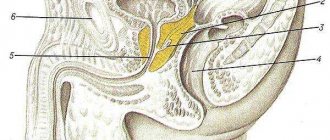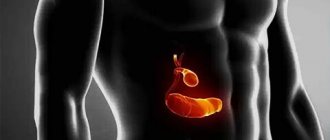Heatstroke is an emergency condition that occurs as a result of overheating of the body as a result of excessive thermal exposure from the outside. Typically, the body copes with functioning in high ambient temperatures using the thermoregulation mechanism, but with heat stroke, thermoregulation is disrupted, which leads to serious impairment of the functions of the cardiovascular and nervous systems. This condition is life-threatening - in the decompensation stage, death occurs in about a third of cases. A person’s life may depend on how quickly and correctly first aid is provided for heatstroke.
What is heatstroke?
Heatstroke is a painful condition resulting from prolonged exposure of the body to high temperatures. To put it simply, heatstroke is overheating of the body. As a result of overheating, the body is unable to maintain normal body temperature, because The processes of heat generation intensify with a simultaneous difficulty in heat transfer, which subsequently causes serious disruption of its vital functions.
For heat stroke to occur, a combination of three factors is necessary: high air temperature, high humidity and physical activity, as a result of which the body produces additional heat. Under the influence of heat and increased sweating, the body loses a large amount of water, which disrupts heat transfer and provokes dehydration.
Heat stroke develops when thermoregulation mechanisms fail. At first, compensatory mechanisms are activated, but with prolonged exposure to pathological external factors (high ambient temperature), they are depleted. Hyperthermia develops, and the numbers can cross the line at 41-42 C.
The development of heat stroke includes:
- Compensation stage. It is characterized by heating of the body, during which its compensatory (cooling) systems are activated. In this case, redness of the skin, profuse sweating, thirst (due to loss of fluid from the body) and so on may be observed. At the same time, body temperature is maintained at a normal level.
- Stage of decompensation (heatstroke itself). At this stage, overheating of the body becomes so pronounced that compensatory cooling mechanisms are ineffective. At the same time, the body temperature rapidly rises, as a result of which the signs of heat stroke appear, listed above.
The main symptoms of heatstroke include headache, lethargy and fever
Pathological processes in the body:
- Dehydration, critical loss of fluid and salts due to sweating.
- Problems in the functioning of the central nervous system.
- Heart problems.
- Blood oxidation.
The heaviest blow is taken by the heart, which has difficulty functioning, and the liver, which does not have time to filter out dying blood cells. Studies of people who die as a result of heatstroke show hemorrhages and swelling of the brain, neuronal degradation as in a disease of the nervous system, and severe hydropic changes.
- ICD 10 code: T67.0
Prevention of heat and sunstroke in the hot season
A feature of this pathology is its predictability. Of course, it is difficult to predict that a person will experience heatstroke, but it is quite possible to predict an increased risk based on available environmental data. This is why prevention measures come to the fore. The most dangerous time of year for heatstroke is summer. In order to minimize the possibility of overheating, you should follow the rules of behavior during the heat:
- Try not to stay in the open sun for too long, and if you are in it for more than half an hour, cover your head with a Panama hat. The best place for walking on a hot sunny day is in the shade of trees;
- Try not to go outside between 12:00 and 16:00, as the summer heat is at its peak at this time of day;
- Dress in summer in loose-fitting clothes made of light, light-colored fabrics that are highly breathable;
- Maintain drinking regime. Sweating is one of the most important mechanisms of thermoregulation, however, with the release of sweat, the body loses a significant amount of fluid, which must be replenished to prevent dehydration. In summer, an adult needs to drink at least two liters of water per day, and in some situations (extreme heat, physical activity) significantly more. It should be remembered that sweet carbonated drinks, beer, tea, coffee, tonics cannot replace water, since they increase the secretion of fluid - when they are consumed, the body releases more water than it enters. In extreme heat, you can drink slightly salted water - salt promotes fluid retention in the body;
- Reduce the amount of heavy food in your diet, giving preference to light vegetable dishes, fruits and dairy products.
Parents should remember that children have an imperfect thermoregulation mechanism due to their age, so children are much more likely than adults to be at risk of overheating in the hot season, especially given their high physical activity. Therefore, all of the above rules must be applied to them first.
Reasons for development
There are two main, often closely related, reasons for the development of heat stroke: thermal exposure and insufficient speed of adaptation of the body to unfavorable environmental conditions.
Heat stroke can also happen indoors - hot production workshops, baths and saunas, hot offices, a hot car in a traffic jam, etc. Active training in hot weather also poses a danger, since physical training in such weather only accelerates the heat exchange process.
The causes of heat stroke can be:
- high temperature and humidity;
- high temperature in closed or poorly ventilated areas;
- physical work in leather, rubberized or synthetic clothing under the influence of high ambient temperatures;
- overwork;
- dehydration of the body;
- plentiful food;
- long hikes in hot weather.
It is even easier to get heatstroke than sunstroke, because... the sun is not a necessary condition for him; it is enough to work hard in clothes that are too warm and do not allow air to pass through, or to spend several hours in a stuffy, poorly ventilated room.
People who suffer from:
- hypertension,
- cardiovascular diseases,
- diseases of the thyroid gland,
- diabetes mellitus and some other endocrine diseases,
- vegetative-vascular dystonia,
- bronchial asthma,
- neuropsychiatric diseases,
- anorexia,
- liver cirrhosis, hepatitis,
- anhidrosis, hyperhidrosis, as well as those who have recently suffered a stroke or myocardial infarction.
Causes
There are two forms of overheating:
- overheating during physical activity (in young people, athletes, those who work in a stuffy room);
- classic heatstroke caused by elevated air temperatures.
Not drinking enough fluids in hot weather can lead to heatstroke.
The following reasons contribute to overheating:
- prolonged exposure to the street in hot weather;
- change in climatic conditions;
- wearing multi-layer or synthetic clothing in hot weather;
- hormonal disorders;
- weather sensitivity;
- heart disease (including previous heart attack or stroke);
- overweight;
- use of diuretic medications (read about the causes of enuresis in children);
- insufficient fluid intake;
- use of alcohol or drugs.
If prompt assistance is not provided, the person may be seriously injured.
First signs
Heat fever is an acute human disease caused by thermoregulation disorders during prolonged exposure to high ambient temperatures.
- If a person is hot, he begins to sweat - this is how the heat transfers to the environment. In particularly hot weather, the body can lose up to 1 liter of fluid in 1 hour of sweating.
- When overheated, blood vessels constrict; heat does not go to the skin, but remains inside. When dehydrated, the blood becomes thick and blood circulation in the internal organs is impaired. Blood flows to the skin (the face turns red), but there is not enough blood in the organs (weakness appears).
- A person develops a fever, intoxication of the body, heart failure occurs, which can even lead to respiratory arrest and death.
The primary early signs and symptoms of heat stroke are:
- the skin in some places on the body has areas of redness;
- a person’s skin is cold to the touch and may have a pale or bluish tint;
- general malaise in the form of weakness and constant drowsiness;
- the appearance of shortness of breath;
- the victim may lose consciousness;
- the appearance of cold sweat;
- headache and dizziness;
- there is darkening in the eyes;
- the pupils remain dilated for a long time;
- the pulse becomes rapid and weakens over time;
- increase in body temperature up to 40 degrees;
- attacks of nausea or vomiting;
- pain in the abdomen;
- the victim is unable to go to the toilet for a long time due to dehydration;
- the occurrence of seizures;
- in severe cases, the victim loses consciousness.
When does heat stroke start and how long does it last?
It is difficult to determine the duration of heat stroke, since its first symptoms can always be noticed at the very beginning. Often, dry mouth, thirst, weakness and headache already indicate that you have suffered heatstroke. However, these symptoms may not be paid attention to, and only when arrhythmia appears, the temperature rises and other symptoms appear, it becomes clear that the problem is heat stroke. Then it can progress to a severe stage, and even cause damage to the nervous system.
Heat stroke and the fever that accompanies it have stages of development and decline:
- Prodromal (often occurs almost unnoticeably);
- Elevation (can be critical or lyrical);
- Stability;
- Reverse lysis.
At the beginning, heatstroke seems to warm up. The nervous system is in extremely high tone, but the peripheral arteries are not, at the same time the blood flow is “centralized”. Due to problems with peripheral microcirculation, the so-called “goose bumps” appear, accompanied by chills, trembling and a sharp feeling of cold. By not missing this moment and starting to act already at this stage, you can prevent unpleasant consequences and quickly overcome heat stroke. Symptoms at this stage manifest differently and with varying degrees of severity in different people. Some people clearly feel the changes, while others begin to understand that they received heatstroke only at the stage of rising fever.
The development of the disease is critical when the temperature rises to high levels very quickly (on average, in 40-45 minutes), but also quickly decreases if measures are taken and treatment is carried out. The lyrical course of the disease is much more dangerous and longer lasting. It is largely prolonged and may not be accompanied by a constantly high temperature, but it is accompanied by lethargy, drowsiness, a drop in blood pressure and an accelerated heart rate. It is important to rest throughout this period and not try to endure the disease on your feet, because serious complications are possible.
With rest and proper treatment, you can quickly move into the stability phase, when deterioration is no longer observed, and move into the reverse lysis stage. At this stage, you will feel a noticeable drop in temperature and an improvement in your well-being.
Types and degrees
From a clinical point of view, it is customary to distinguish several forms of heat stroke (depending on which symptoms are most pronounced in the clinical picture of the disease). This allows you to select the most effective treatment for each individual patient.
Two types of heat stroke:
- The first type - overheating occurs due to heavy training, most often occurs in athletes. Sometimes it occurs during physical work in rooms with high temperature and humidity.
- The second type is overheating due to an increase in ambient temperature. Regardless of the cause, both forms have the same destructive effect on health and are life-threatening.
In medical sources you can find a division of the disease into 4 types:
- asphyxia – respiratory failure, fever up to 38 °C;
- hypothermia – fever, fever (39-41 °C);
- cerebral form – mental disorders and neurological phenomena occur (convulsions, delirium, hallucinations);
- gastroenteric form - disturbance of the digestive system (vomiting, nausea, abdominal pain, abnormal stool).
Most often, there is not one form of heat stroke, but several at once. In case of heatstroke, it is necessary to prevent dehydration. It manifests itself in thirst, dry mouth, and cracked lips. It is also important to identify the signs of heat and sunstroke.
Also, the forms of heat stroke differ in the severity of the hyperthermic process:
- A mild form of hyperthermia occurs with rapid breathing, increased heart rate, headache, weakness and nausea.
- Heat stroke of moderate severity is myasthenia gravis (muscle weakness), intense headache, nausea, leading to vomiting. Possible loss of coordination of movements, fainting. Hyperthermia in this form is accompanied by tachycardia, an increase in body temperature to 39-40°C, and hyperhidrosis.
- The most dangerous degree of hyperthermia is severe, when all the symptoms of the cerebral form appear - clonic-tonic convulsions, paralysis, delirium. Breathing becomes intermittent, rapid, pulse reaches 120 beats per minute, characteristic cyanosis of the skin develops, pyretic temperature reaches 41°C, all reflexes are weakened. This condition often ends in coma and death.
First aid for sunstroke
Sunstroke is a form of heatstroke that occurs when overexposed to direct sunlight. Sunstroke can be accompanied by burns if a person spends too much time in the sun wearing open clothes or without any clothes at all, but it is a mistake to think that you can only be exposed to it by sunbathing for a long time. In fact, exposure to direct sunlight on an uncovered head is enough to cause sunstroke.
Signs of sunstroke are darkening of the eyes and/or spots flashing before the eyes, headache, nausea (sometimes accompanied by vomiting), facial flushing. Since sunstroke is a manifestation of heatstroke, it can also be accompanied by all the symptoms that accompany heatstroke.
First aid for sunstroke is the same as for heatstroke.
Symptoms of Heat Stroke in Adults
Recognizing heatstroke is quite simple, but many people mistakenly confuse it with a state of fatigue and do not take proper measures to improve their well-being and neutralize the factors that have such a negative effect on the body. First of all, a person feels weakness, severe thirst and dry mouth, he feels stuffy, lacks air, which can cause pressing pain in the chest. After some time, sweating increases, the skin acquires a reddish tint, the pulse increases significantly and blood pressure decreases. Often the body temperature in this condition reaches 39-41 degrees.
In adults, signs of heatstroke include:
- lethargy, drowsiness, weakness (you want to lie down or lean on your elbows, the person cannot stand on their feet);
- headache and dizziness;
- facial redness;
- temperature increase up to 40 °C;
- intestinal disorders (vomiting, diarrhea).
After this, the person falls into a delusional state, hallucinations occur, and the patient loses consciousness. The complexion turns from red to white (bluish), and profuse sweating occurs. Further, the functioning of the cardiovascular system is disrupted (the pulse quickens, but is faintly audible). This condition can be fatal.
People suffering from a malfunction of heat transfer are constantly in a state of weakness and often drink water. If first aid is not provided to the victim on time, the following symptoms appear:
- convulsions;
- uncontrolled urination or bowel movements;
- cyanosis;
- bleeding in the gastrointestinal tract;
- clouding of consciousness with delirium.
What aggravates the patient's condition?
Symptoms of heat fever: headache, weakness, body temperature above 40 degrees
- warm clothes;
- chronic diseases;
- high temperature and humidity;
- use of muscle relaxants;
- problems with skin and sweat glands;
- disturbances in water balance in the body;
- low ability to adapt.
Another feature of heat stroke is related to the possible delayed effects on the body of its consequences. A person may feel slightly unwell and take steps to stay out of the heat and drink plenty of fluids. Having felt an improvement, the victim may consider that everything has passed. But it is possible that negative consequences will appear later, so even if you have primary symptoms, it is better to see a doctor.
Signs of different degrees of heat stroke
| Lightweight | In mild forms, the following are most often noted:
|
| Average | Several other signs of the average form:
|
| Heavy | In severe cases:
|
If assistance to the victim was provided untimely or he was hospitalized late, this can cause shock, coma, cerebral edema, and more.
How to treat heatstroke at home
You can manage the symptoms of heatstroke at home using a number of methods:
- apply cool compresses to the head to relieve headaches and reduce fever;
- apply cold compresses to the great vessels and liver to reduce the temperature and prevent complications;
- rinse the stomach;
- do warm enemas;
- wrap in a cool sheet or diaper.
Wrapping yourself in a cool cloth is one of the simplest and oldest ways to cope with heatstroke. In particular, children are often wrapped in swaddling clothes, as this can quickly lower body temperature, soothe and reduce the discomfort caused by heat stroke. You can also take a cool shower and stand under the water for as long as possible. For mild strokes, cool wraps and compresses are usually enough to provide relief. Several procedures and rest will allow you to quickly forget about heat stroke and return to a normal rhythm of life.
If all these actions do not bring results and there is no noticeable improvement in the condition, then medications are needed.
To avoid complications, it is worth using special preparations and mixtures in time in addition to physical methods. So, it is safest to prepare a lytic mixture (aminazine, dibazole and pipolfen are mixed in novocaine), which quite effectively combats the consequences of heat stroke.
For even greater results, you can use droperidol, and sodium hydroxybutyrate and seduxen will help with muscle cramps. You should not use antipyretics when the temperature has dropped to 37.5 and carry out active drug treatment unless there are compelling reasons for this. Particular care must be taken when handling children. Do not rush to apply therapeutic procedures and “bring down” the temperature. In case of heatstroke, it is important to prevent complications, and temperature is only one of the symptoms and is not the object of treatment.
Consequences
Heatstroke has a high mortality rate. This occurs due to additional diseases and elevated body temperature. The victims who were able to survive suffer brain damage. In some cases, they are left with encephalopathy.
Symptoms and treatment in adults are no different from children. The only difference is that the child’s signs are quite pronounced. It is not difficult to detect heatstroke in them. If such a situation arises, first aid must be provided.
Possible consequences and complications for the body:
- Blood thickening – lack of fluid in the body causes the patient’s blood to become excessively thick. This is fraught with thrombosis, heart attacks, and heart failure.
- Renal failure is a severe pathology that develops as a result of heat stroke. Damage is also provoked by metabolic products that appear under the influence of significant numbers on the thermometer.
- Acute respiratory failure - appears as a result of changes in the functioning of the respiratory center located in the brain.
- Damage to the central nervous system - manifested by uncontrollable vomiting, loss of consciousness, disorders of speech, hearing and visual functions.
- Shock is a dangerous complication that occurs due to lack of fluid, imbalance of electrolytes and blood supply to internal organs.
Consequences of heat or sunstroke for adults and children
With timely provision of first aid, the development of heat or sunstroke can be stopped at the initial stages. In this case, all symptoms of the disease will disappear in 2–3 days, leaving no consequences. At the same time, delay in providing first aid to the victim can lead to damage to vital organs and systems, which can be accompanied by the development of severe complications requiring long-term hospital treatment. Heatstroke and/or sunstroke can be complicated by:
- Blood thickening.
When the body is dehydrated, the liquid part of the blood also leaves the vascular bed, leaving only the cellular elements of the blood there.
This causes the blood to become thick and viscous, increasing the risk of blood clots ( blood clots
).
These blood clots can clog blood vessels in various organs ( in the brain, in the lungs, in the limbs
), which will be accompanied by impaired circulation in them and lead to the death of cells in the affected organ.
Moreover, pumping thick, viscous blood creates additional stress on the heart, which can lead to the development of complications ( such as myocardial infarction - a life-threatening condition in which some of the muscle cells of the heart die and its contractile activity is impaired
). - Acute heart failure.
The cause of the development of heart failure may be an increase in the load on the heart muscle (
as a result of blood thickening and an increase in heart rate
), as well as damage to muscle cells as a result of overheating of the body (
this disrupts the metabolism and energy in them, as a result of which they can die
) . A person may complain of severe pain in the heart area, severe weakness, shortness of breath, a feeling of lack of air, and so on. Treatment should be carried out exclusively in a hospital. - Acute respiratory failure.
The cause of respiratory failure may be damage to the respiratory center in the brain. In this case, the breathing rate quickly decreases, as a result of which the delivery of oxygen to the internal organs and tissues is disrupted. - Acute renal failure.
As a result of dehydration, the process of urine formation is disrupted, which negatively affects kidney cells. Moreover, various metabolic by-products produced in the body as a result of exposure to high temperatures contribute to kidney damage. All this can lead to irreversible damage to the kidney tissue, as a result of which the urine-forming function of the organ will be impaired.
Read also Mushroom poisoning! First aid, symptoms, prevention
Shock
Shock is a life-threatening condition that develops against the background of severe dehydration, dilation of blood vessels and overheating of the body. Shock due to heat or sunstroke is characterized by a pronounced drop in blood pressure, rapid heartbeat, impaired blood supply to vital organs, and so on. The skin may become pale and cold, and the patient may lose consciousness or fall into a coma.
Treatment of such patients should be carried out exclusively in the intensive care unit, where the functions of the cardiovascular, respiratory and other body systems will be supported.
CNS damage
Heatstroke may be accompanied by fainting ( loss of consciousness
), which passes within a few minutes after the start of first aid. In more severe cases, the patient may fall into a coma, from which several days of intensive treatment may be required to recover.
Severe and long-term brain damage due to sunstroke may be accompanied by disruption of various functions of the central nervous system. In particular, the patient may experience disturbances in sensitivity or motor activity in the limbs, hearing or vision impairments, speech disorders, and so on. The reversibility of these disorders depends on how quickly the correct diagnosis was made and specific treatment was started.
What are the dangers of heat and sunstroke during pregnancy?
During heat stroke, the same changes develop in the body of a pregnant woman as in the body of an ordinary person ( body temperature rises, blood pressure decreases, and so on
). However, in addition to harm to the female body, this can also harm the developing fetus.
Heat and sunstroke during pregnancy can be complicated by:
- A pronounced drop in blood pressure.
The delivery of oxygen and nutrients to the fetus is ensured through the placenta, a special organ that appears in the female body during pregnancy. When blood pressure drops, the blood supply to the placenta may be disrupted, which may be accompanied by oxygen starvation of the fetus and its death. - Cramps.
During cramps, there is a strong contraction of various muscles, which can lead to damage to the fetus in the uterus. - Loss of consciousness and fall.
Both the woman and the developing fetus can be injured during a fall. This can cause intrauterine death or developmental abnormalities.
Is it possible to die from heatstroke and sunstroke?
Heatstroke and sunstroke are life-threatening conditions in which the victim can die if the necessary help is not provided in a timely manner.
The causes of death from heat and sunstroke can be:
- Brain swelling.
In this case, as a result of increased intracranial pressure, nerve cells that provide vital functions (
such as breathing
) will be compressed. The patient dies from respiratory arrest. - Cardiovascular failure.
A pronounced drop in blood pressure can lead to a lack of oxygen at the level of the brain, which will be accompanied by the death of nerve cells and can lead to the death of the patient. - Convulsive seizures.
During an attack of convulsions, the breathing process is disrupted, since the respiratory muscles cannot contract and relax normally. If an attack lasts too long, or if attacks are repeated frequently, a person may die from suffocation. - Dehydration of the body.
Severe dehydration (
when a person loses more than 10% of weight per day
) can lead to death if the body's water and electrolyte reserves are not restored in time. - Disturbance of the blood coagulation system.
Dehydration and increased body temperature promote the formation of blood clots (
blood clots
). If such blood clots block blood vessels in the heart, brain, or lungs, the patient may die.
Diagnostics
Diagnosing heat stroke is not difficult for doctors, however, additional laboratory and instrumental tests may be prescribed to confirm the diagnosis and exclude other possible causes of symptoms that have developed, especially in patients with impaired consciousness. These studies include:
- general and biochemical blood test with mandatory determination of sodium and potassium content in blood serum;
- Analysis of urine;
- blood gases;
- ECG.
Other studies may be prescribed to determine the degree of damage to internal organs, for example, chest x-ray, EEG, ultrasound of the kidneys, etc.
Risk factors
Sunstroke develops when a person spends a long time outside without a hat in direct sunlight, especially in hot and windless weather.
As a rule, sunstroke develops at air temperatures above 30C.
With additional exposure to certain external and internal factors, the risk of sunstroke increases. These unfavorable factors include the following:
- high air humidity;
- stuffy, windless weather;
- excess clothing on a person;
- active physical work;
- lack of fluid in the body;
- binge eating;
- alcohol intoxication;
- obesity;
- chronic diseases of the cardiovascular system, for example, arterial hypertension or coronary heart disease;
- taking certain medications (antiallergic drugs, central nervous system stimulants);
- immaturity of the thermoregulation mechanism (in children).
Treatment
Treatment should only be carried out by a doctor. Self-medication is dangerous for your health!
Treatment of heatstroke in adults before the doctor arrives consists of the following measures:
- Keep the victim in the shade or cool place. If this is a room, provide access to fresh air and normalize humidity. There should not be a large crowd of people near the patient. It is recommended to fan the patient with something, for example, a fan.
- The victim should only lie on his back. Fix your head and legs a little higher. You can put a pillow under them (if possible). It is important to monitor the moment when the patient begins to vomit and place him in such a way as to avoid the substances getting into the respiratory tract. If a person has already vomited, you should make sure that there is no vomit left in the mouth.
- Remove the patient's outer clothing and anything that may compress the chest and neck. Also remove the belt on your trousers and any clothing made of thick or synthetic fabric.
- Wrap the person in a wet cloth (most often a sheet) or provide frequent spraying with water. Constantly wipe your face with cool water (both when pouring over the body and when wetting the fabric for wrapping, the water temperature should be within +18°C - +20°C).
- Give the victim plenty of fluids. It is desirable that it be mineral or at least simple cool water.
- Provide a constant cold compress on the back of the head and forehead of the victim. This can be a wet cold cloth, a cold water bottle, or ice cubes wrapped in a cloth.
The attending physician may prescribe light therapy in the form of the following medications:
- Oral rehydration salts. Their use helps replace fluid and electrolytes lost by the body, as well as normalize the internal acid-base balance. Such drugs are sold in pharmacies in the form of a powder or a ready-made solution.
- Medicines that improve the functioning of the cardiovascular system and ensure normal blood supply to vital organs.
- Sedatives for the central nervous system. This is necessary if symptoms appear in the form of seizures.
If bed rest and light therapy do not help recovery, as well as in the case of severe consequences of the blow, treatment takes place only in a hospital setting. A comprehensive examination is prescribed to determine the presence of pathological changes in the internal organs of the victim.
Learn how to provide first aid for heatstroke
Restoring the body after heatstroke
- Normalization of the victim's body temperature may take a long time. The duration of such recovery directly depends on the severity of the lesion. Doctors recommend following a certain regimen after heatstroke in order to fully restore the functioning of all organs and systems of the body.
- Drinking fluids regularly can help you recover from heatstroke. Moderate physical activity, in particular cardio, has a good effect. Among the types of physical activity, active walking is recommended. It is worth refraining from strength exercises, as they take a lot of oxygen from the blood, as well as from static and dynamic stress, for example, holding weights.
- In addition, it is recommended to eliminate stress and emotional distress. After all, no one has canceled their effects both on hormonal levels and on vascular tone, heart rate and blood pressure levels in general.
First aid
At the first suspicion of overheating, parents should call a doctor and provide first aid.
First, the victim must be moved to a cool place
It is important to know what to do in case of heatstroke:
- Move the victim to a shade or cool room.
- Remove outer clothing (from the baby - diaper).
- Place a cold compress on your head and wipe your body with cool water (adults can be wiped with alcohol or vodka). This will help cool you down.
- Give cool water to drink often, but little by little. If you faint, you should not give anything to drink, as water may enter your inhalation tract! It is better to drink clean, non-carbonated drinking water.
- If vomiting begins, the person must be placed on his side, his head raised and tilted.
You also need to know what not to do if you have heat stroke:
- Give antipyretic drugs.
- Provide alcohol and caffeinated drinks.
- Quickly cool the victim (for example, immerse in cold water).
If you take these actions on time, you can avoid disastrous consequences. For mild cases, first aid is usually sufficient to restore the body. If it doesn’t get better, call a doctor immediately, he will prescribe treatment for heatstroke.


